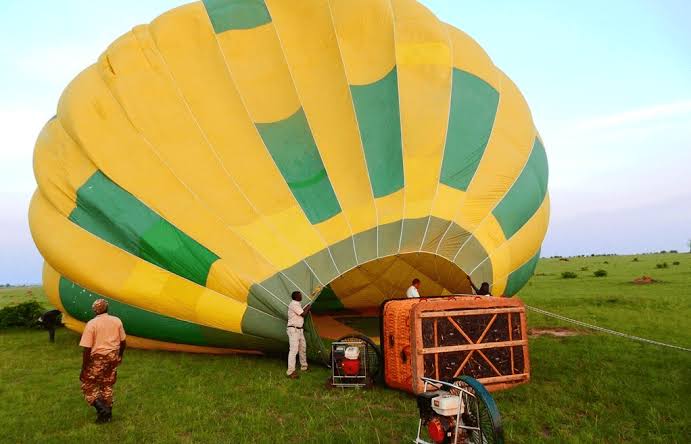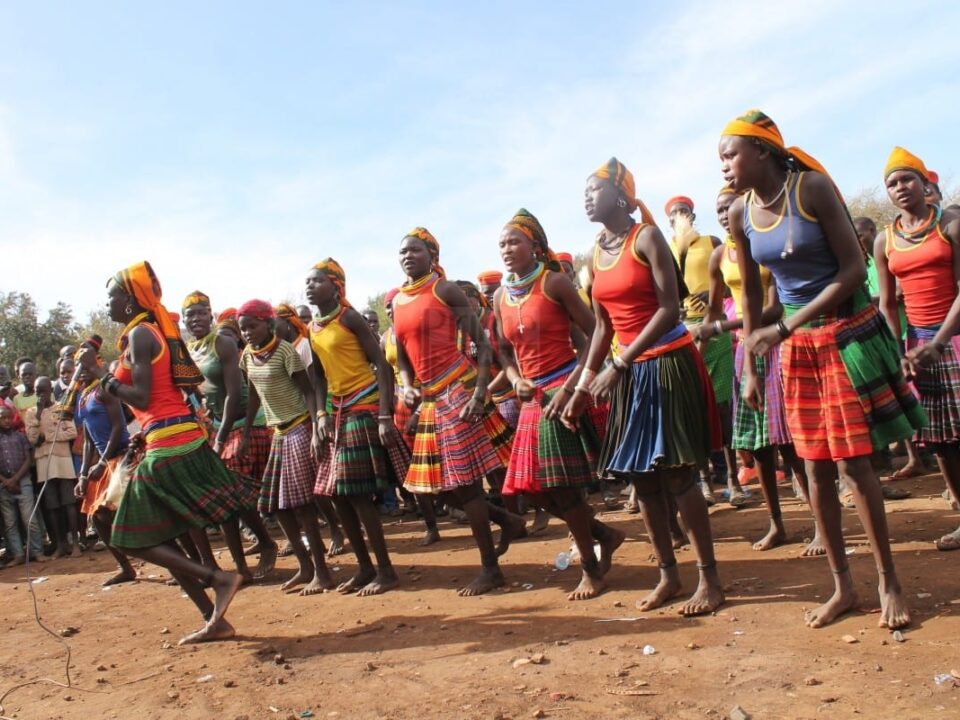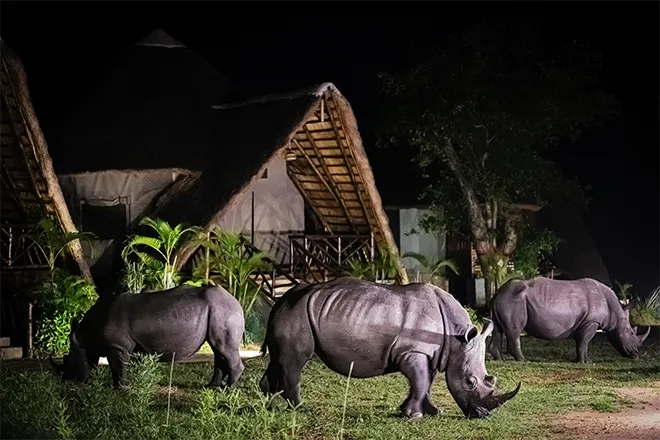- GET IN TOUCH WITH US:
- +256 753518160
- +256 777842166
- info@experiyatourcompany.com

What camera gear should I bring for a Kenya safari?
November 20, 2025
Can I use drones in Kenya’s parks?
November 20, 2025How do I protect my gear from dust during game drives?
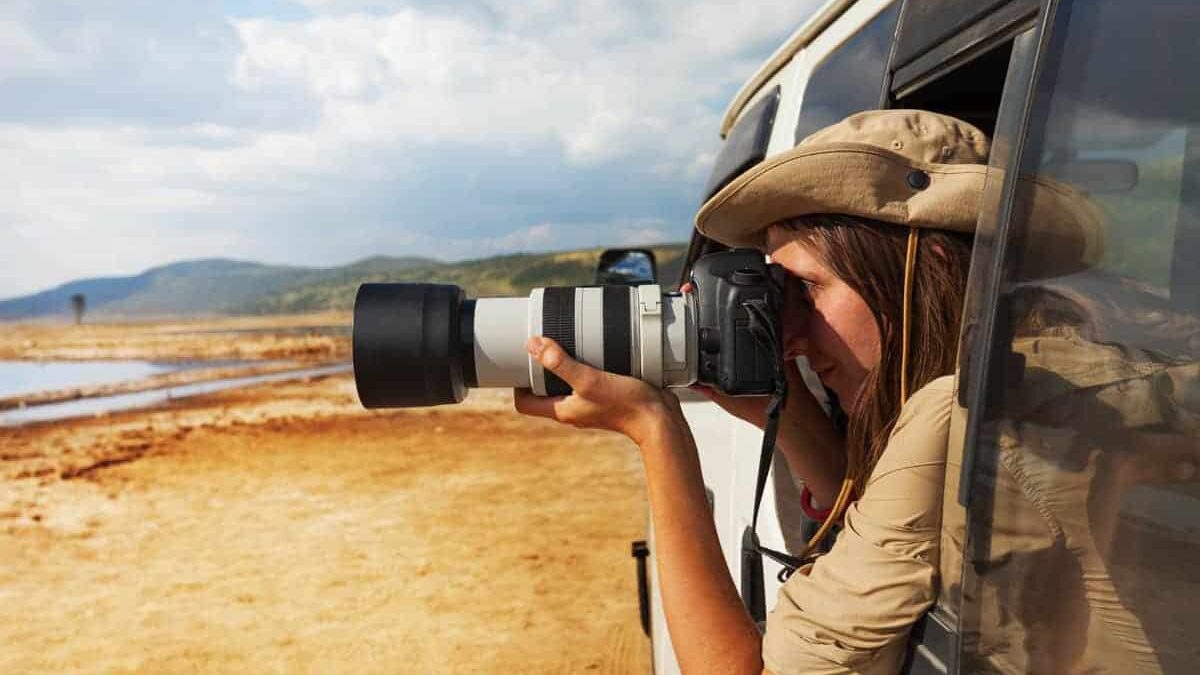
How Do I Protect My Gear from Dust During Game Drives?
One of the biggest challenges photographers face on safari—especially in Kenya’s dry season—is the relentless dust that follows every game drive. As vehicles move across the savannah, fine red or brown dust rises into the air and settles on everything: clothing, skin, bags, seats, and most critically, camera gear. In places like the Maasai Mara, Amboseli, Samburu, and Tsavo, dust becomes a constant companion, particularly from June to October when the landscape becomes dry and powdery. While dust creates some of the most beautiful photographic atmospheres—think golden haze around elephant herds or dramatic sunsets filtered through suspended particles—it can also be a serious hazard for your equipment. Photographers planning their safari often ask: How do I protect my gear from dust during game drives?
Safeguarding your cameras and lenses is crucial because even a small amount of dust can cause issues like autofocus malfunction, scratches, sensor spots, and internal lens contamination that requires expensive professional cleaning. With proper preparation and mindful habits, you can enjoy photographing Kenya’s wildlife without compromising your equipment. This guide provides an in-depth, practical approach to dust protection on safari, ensuring your gear stays safe, functional, and ready for the next amazing shot.
Understand the Nature of Safari Dust
Safari dust is extremely fine, often softer and lighter than the dust you might encounter in urban or farming environments. It suspends easily in the air, travels long distances, and settles deeply into tiny gaps and grooves. When vehicles drive fast, or when they pass other vehicles, dust can swirl inside cabins even when windows are partially closed.
Dust is especially intense in:
Dry season months (June–October) Sandy or volcanic parks like Amboseli and Tsavo Open plains in the Maasai Mara during peak migration Dirt roads and off-road paths in private conservancies Because dust is so persistent, the goal isn’t to eliminate it completely—that’s impossible. Instead, the aim is to minimize contact and prevent it from entering sensitive parts of your camera gear.
Use Dust-Proof Camera Bags and Lens Cases
Your first line of defense is a reliable camera bag designed for dusty and rugged environments. Choose a bag with:
Dust-resistant zippers Weather-sealed compartments Durable, easy-clean outer material Tight closures around the edges Rain covers that double as dust covers A well-built camera backpack or shoulder bag keeps dust out when the camera is not in use. Hard cases like Pelican or Nanuk offer top-tier protection but can be cumbersome inside safari vehicles. Many photographers prefer soft bags with padded compartments that allow easy access while keeping dust sealed out.
Lens pouches with drawstring closures or zippered neoprene sleeves add an extra layer of safety when storing gear between shoots.
Bring a Simple, Effective Dust Cover or Wrap
Even when shooting, your gear needs protection during the moments it is not actively in your hands. Dust covers and wraps are practical, lightweight, and essential.
The following items work exceptionally well:
Microfibre cloth wraps Lightweight camera rain covers (also used as dust shields) Quick-access neoprene covers Pillowcases (a photographer favourite—simple, cheap, effective) Large scarves or kanga wraps Ziploc bags for small accessories When dust swirls inside the vehicle, quickly covering your gear with a wrap can make a huge difference. These covers prevent fine particles from settling on exposed areas like zoom rings, screens, and buttons.
Avoid Changing Lenses Outdoors or During Drives
Changing lenses in dusty environments is one of the biggest risks for sensor contamination. Fine particles can enter the camera body, settle on the sensor, and create spots that show in every image—especially sky or plain backgrounds.
To avoid this:
Change lenses only inside a zipped bag or inside the vehicle with windows closed Avoid mid-drive lens changes Wait for calm moments when dust is settled Keep the camera body pointed downward when swapping lenses Avoid changing lenses near sandy or dusty ground Carry two camera bodies with different lenses Instead of changing lenses frequently, many safari photographers bring two bodies—one with a long zoom lens (such as 100–400mm or 200–600mm) for wildlife, and one with a wide or mid-range lens for landscapes and closer scenes. This method drastically reduces dust exposure and keeps you ready for sudden action.
Use UV or Clear Filters for Lens Protection
A UV or clear protective filter is a small investment that protects your lens front element from dust, scratches, and debris. Dust can be wiped off the filter without fear of damaging the lens itself.
Benefits of protective filters:
Prevents dust from settling on the lens glass Protects against scratches from cleaning Acts as the first line of defense against flying debris on windy days Easy to clean or replace If dust forms a sticky layer from moisture, cleaning a filter is far safer than cleaning the lens element.
Keep a Rocket Blower and Soft Lens Brush Handy
A rocket blower is an invaluable tool on safari. It allows you to blow dust off the camera and lenses without touching or scratching any surfaces. A soft lens brush is also helpful for gently removing particles.
Always use:
A rocket blower first, before wiping anything A soft brush for stubborn particles Microfiber cloths for gentle cleaning Avoid:
Breathing on lenses (your moisture creates sticky dust) Using clothing to wipe lenses Using canned air (too strong and may damage components) Cleaning in windy or dusty conditions Clean your gear at the end of each day in your lodge room where dust is minimal.
Use Camera Raincovers or All-Weather Covers on Game Drives
Specialized camera covers made from nylon, neoprene, or light PVC offer excellent dust protection. They are designed for wildlife photographers who work in sandy and dusty environments like deserts and savannahs.
Benefits:
Covers the entire camera-lens combo Shields zoom rings and joints from dust Provides quick access to controls Prevents powder-like dust from entering sensitive gaps These covers are especially helpful in Tsavo East, Amboseli, and Laikipia, where dust density is highest.
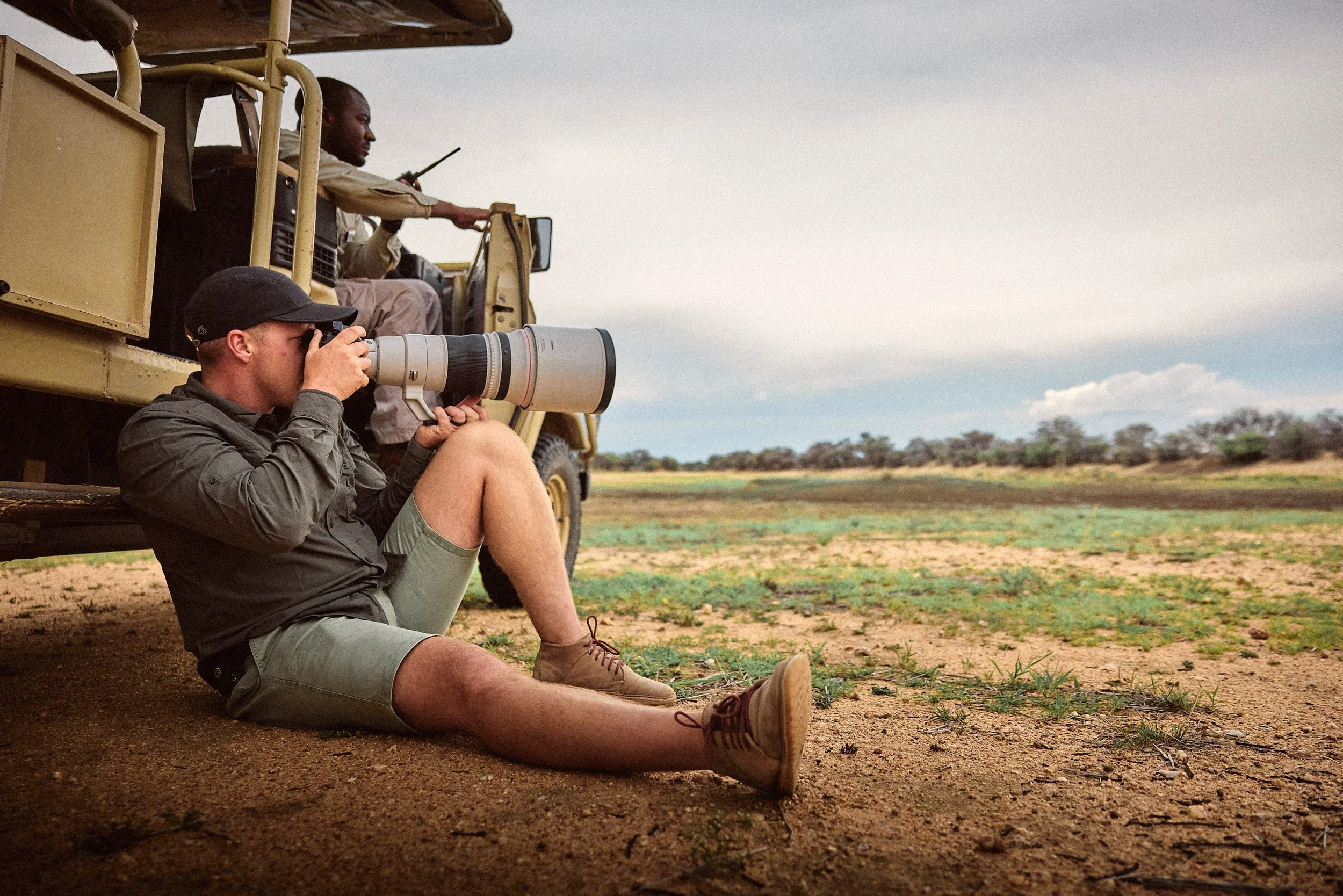 Keep Gear Off the Vehicle Floor
Keep Gear Off the Vehicle Floor
The floor of the safari vehicle is the dustiest place inside. Fine particles swirl constantly around passengers’ feet, especially when the vehicle moves.
Instead:
Place your camera bag on your lap Keep gear on seats or on top of blankets Use a neck strap or harness to secure cameras away from the floor Some photographers bring a small towel to place on their lap as an additional dust barrier.
Protect Your Gear During Dust Storms or Heavy Wind
Kenya’s dry season sometimes brings sudden gusts of wind that sweep dust dramatically across the plains. During these moments:
Cover gear immediately Close vehicle windows and roof hatches Turn off your camera Avoid lens changes Secure gear inside bags Keep cleaning tools away until dust settles Windblown dust is finer, more aggressive, and more likely to infiltrate equipment if left exposed.
Use Silica Gel Packs Inside Your Bag
Moisture mixed with dust creates sticky residue that is harder to clean and can damage internal components. Silica gel packs absorb moisture inside your bag and help keep your gear dry and dust-resistant.
Place several silica gel packets:
In each lens pouch In your main camera bag Near batteries and electronic accessories Replace them regularly, especially after rain or humid evenings.
Clean Gear Carefully Every Evening
After each game drive:
Use a rocket blower to remove loose dust Wipe down the camera body with a barely damp microfiber cloth Clean the lens filter—not the lens—unless necessary Brush dust from buttons and seams Store gear inside sealed bags or cases Avoid cleaning lenses excessively, as it may cause scratches. The goal is gentle, minimal cleaning done consistently.
Choose a Safari Operator Who Understands Photographers
A knowledgeable safari company and guide make a huge difference. Some vehicles:
Provide bean bags Offer dust-proof storage areas Drive more smoothly to reduce dust storms Position themselves upwind of dusty vehicle convoys Maintain slower speeds in dusty areas Work tirelessly to minimize dust inside the cabin Working with professionals who understand photography is invaluable for dust management.
Book Your Photography Safari with Experiya Tour Company
For travellers seeking a safari experience where their photography needs are understood, protected, and prioritized, Experiya Tour Company offers expertly designed photography safaris with skilled guides, dust-conscious game drive practices, and carefully selected vehicles. Their team knows how to position photographers for the best shots while ensuring gear remains safe from dust and harsh conditions. When planning your Kenya photography safari, trust Experiya Tour Company to craft a seamless, safe, and unforgettable adventur

